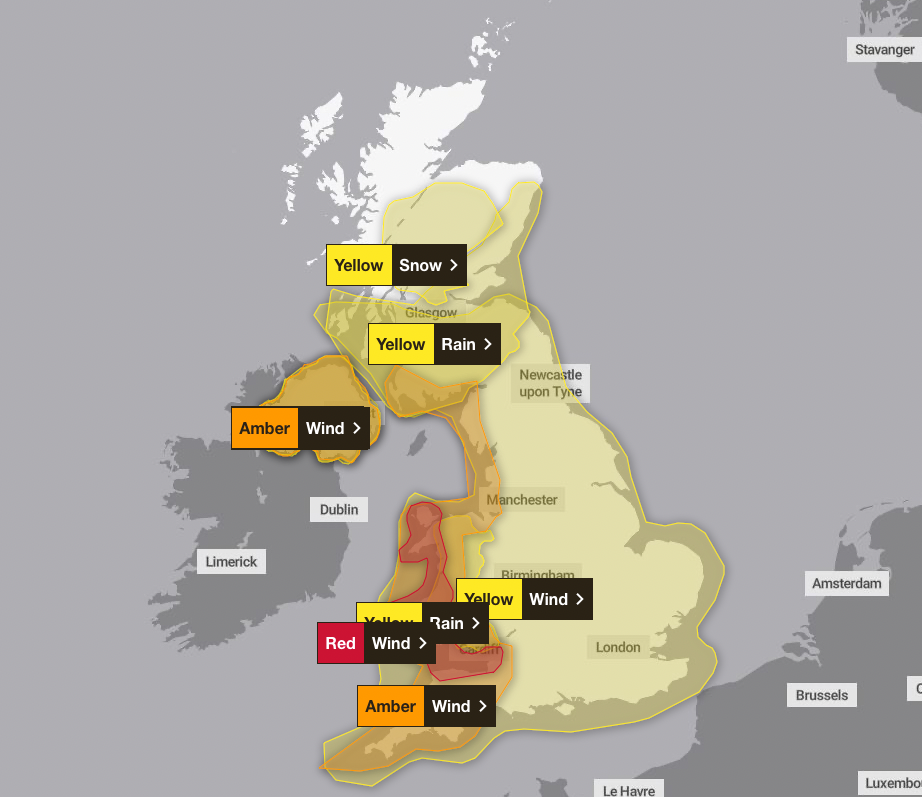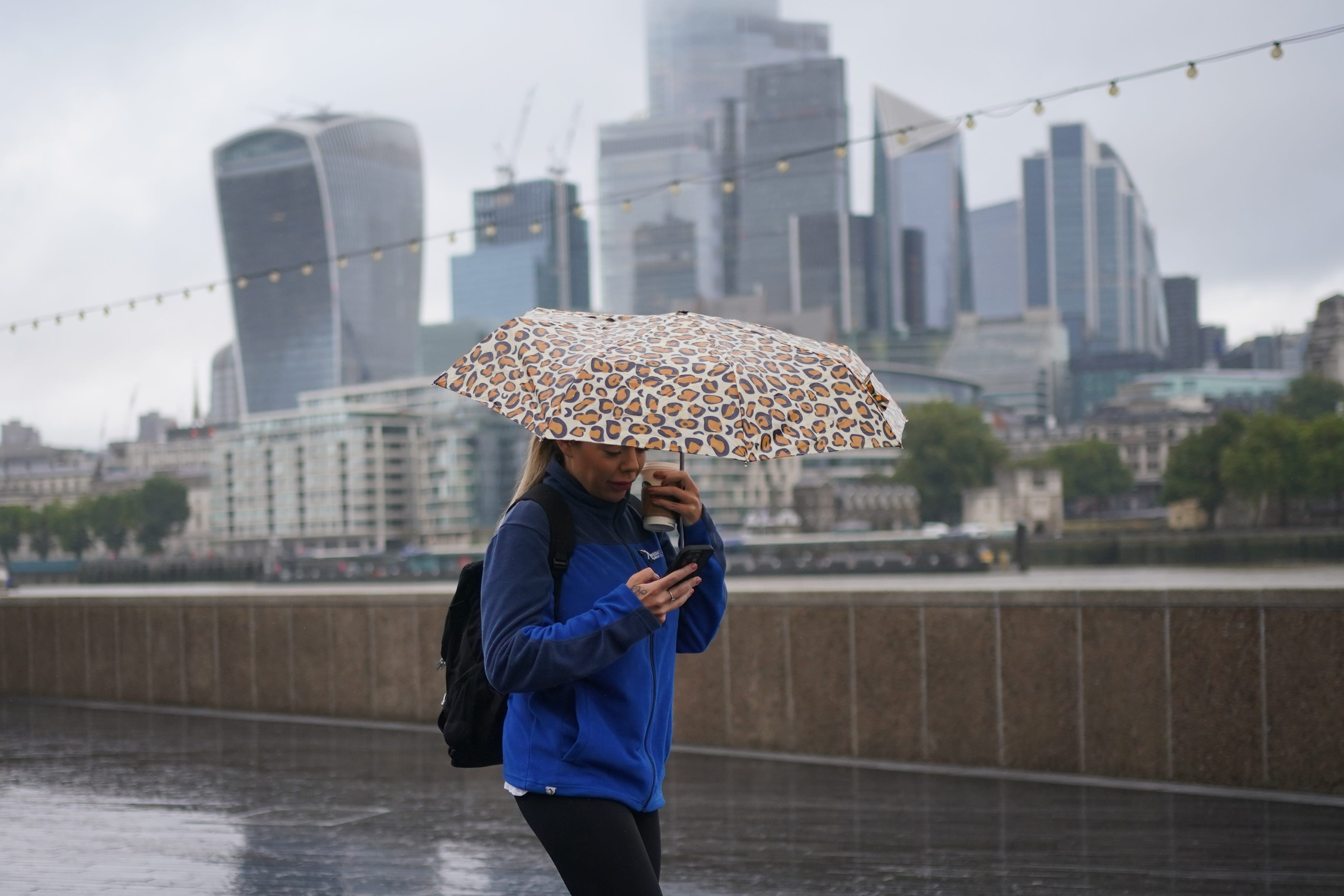A rare red warning for high winds has been issued by the Met Office as Storm Darragh hits the UK, which warns of significant disruption and a “danger to life”.
Parts of Wales and southwest England could see gusts of wind reaching 90mph between 3am to 11am on Saturday, while an amber warning is in place across most of the rest of the UK.
Flying debris and falling trees could pose a risk to life, while large waves and beach material could be thrown onto coastal roads and seafronts.
There could also be damage to buildings and homes, with roofs blown off and power lines brought down, as well as power cuts affecting other services, such as mobile phone coverage.

The fourth named storm of the season is also expected to bring heavy rain over the weekend, with around 130 flood warnings and alerts in place across the UK.
When is Storm Darragh due to hit the UK?
Weather warnings are in place across the country, with a yellow warning for wind until 6am on Sunday covering the entirety of England, Wales, Northern Ireland and southern parts of Scotland.
A red warning for wind has also been in force since 3am on Saturday and covers Cardiff, Bristol and Devon.
A yellow warning for rain is in place for Northern Ireland and Wales, which were badly affected by flooding during Storm Bert, as well as parts of Scotland until noon on Saturday.
How should you protect yourself from the weather?
On its website, the Met Office has issued guidance on how to protect yourself from strong winds which includes protecting your property from damage and people from injury.
Make sure any loose items such as bins, pots, garden furniture, and trampolines have been safely secured, with any shed and garage doors locked. If you live near the coast, make sure to check the forecasts and be careful if walking near cliffs, ensuring any dogs are kept on a lead.
You should also make sure you plan your route before setting off, by listening for travel updates and checking for road closures and delays. Make sure you take a fully charged mobile phone and keep any essentials such as warm clothing and a torch in your car.

What is the advice for driving?
Driving in these conditions can be dangerous, with motorists urged to drive slowly and to be aware of high-sided vehicles and caravans on exposed roads.
Give cyclists and motorcyclists more room than usual and use dipped headlights if visibility is seriously reduced. If a road is flooded, turn around and find another route - the number one cause of death during flooding is driving through floodwater.
Dale Hipkiss, duty manager at National Highways, said: “If you’re planning to drive over the next few days, prepare in advance for the journey and take extra care on the roads.
“If weather conditions become challenging, adjust your driving behaviour to manage the conditions as safely as possible. It’s also a good idea for drivers to check their vehicles, such as tyres, coolant and oil levels, before heading out to reduce the risk of breakdowns.”







